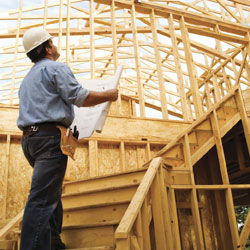
In recent years, one of the key drivers of both building design and operation has been the need to reduce energy use and building-related greenhouse gas emissions. This has stimulated a strong global trend toward green building design.
Building-related emissions of CO2 account for about 40 percent of a nation’s total emissions. It is recognized that energy efficiency measures, including the use of cogeneration (combined heat and power systems), are usually the most cost-effective means of reducing these emissions.
Existing buildings—which will comprise the majority of building stock in 2050 and beyond—offer significant opportunities for reducing energy use, and hence, greenhouse gas emissions. Projects in existing buildings have typically realized energy reductions of 10 to 30 percent, and more in some instances.
In new buildings, the scope is even greater. Buildings are now designed with very low—or even zero—CO2 emissions, thanks to advanced energy efficiency and the use of on-site renewable energy. These measures offer a further bonus—they reduce energy costs at a time when energy prices are increasing, thus providing clients with a financial benefit.
Significant changes in regulations and legislation across the world are placing energy efficiency and greenhouse gas emissions reduction firmly on the compliance agenda. In the future, actual and proposed carbon trading schemes and carbon taxes will mean that buildings’ energy consumption will play an increasingly large role in the value chain. At the same time, we must ensure that buildings are “climate adaptable”—capable of dealing with climate changes that might occur during the building’s projected lifespan.
These views and experiences have been replicated by others. For example, the Clean Energy Blueprint study prepared by the Union of Concerned Scientists (UCS) found that energy efficiency could reduce U.S. electricity use in 2020 by about 1,700 billion KWh. Simply by improving the energy efficiency in buildings and the industry, the U.S. could offset the 40 percent increase in annual electricity usage that is projected within the next 15 years. Virtually every comprehensive energy policy currently under consideration includes aggressive measures to promote energy efficiency in both existing and new buildings.
Energy efficiency provides far more benefits than simply meeting increasing demand. A kilowatt-hour of energy efficiency is generated with zero emissions, offsets investments in transmission and distribution system upgrades, can be produced domestically and consumes no limited resources. Evidence is mounting that shows that the deployment of energy efficiency resources creates jobs in a new “green economy” and is the least expensive of all resources. The cleanest, safest, most secure, reliable and cost-effective kilowatt-hour is the one that isn’t used. IBI

